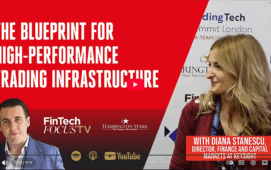
 By Vuk Magdelinic, CEO of Overbond.
By Vuk Magdelinic, CEO of Overbond.
The lack of a consolidated tape or any centralized, unified data source for the bond market creates trading inefficiencies and information asymmetries—and is one of the primary roadblocks to the full automation of fixed income trading. First steps are being taken to develop a consolidated tape for the European markets, but its full construction and adoption is likely years away.
In the absence of a centralized data source, bond trading desks are left to create their own in-house quasi-consolidated tapes by using AI to aggregate multiple data sources. This has been made possible in recent years through greater interoperability between the myriad data feeds and systems used on trading desks, the speed of cloud computing and AI algorithms that are able to ingest, process and aggregate data from multiple sources such as live and historical vendor feeds, internal historical records and OTC settlement layer volume records.
But even with these advances, desks only have insight into the fraction of fixed income transactions that are electronically executed because sometimes large portions of the trades in U.S. and Euro fixed income are still executed through voice trading—leaving a gap in the data available for AI modelling and automated fixed income trading.
Even though electronic trading has been rapidly gaining ground in recent years, traders sometimes prefer to conduct large and complicated trades over the phone. In times of great volatility or uncertainty, such as was seen during the early days of the pandemic, traders revert to executing more of their trades over the phone because they don’t trust the prices they see on electronic data feeds. While information from these trades appears in settlement-layer data, there is often two-day delay (T+2) before it can be integrated into analyses, and data from the conversations themselves is not captured by any method.
But now, the wealth of information stored in this voice data is being unlocked for real-time analysis. Natural language programming (NLP) is being used to convert voice conversations that take place on the trading desk turrets into data that can be understood and used by AI algorithms.
NLP is a field of AI that combines modeling of human language with machine learning to allow computers to understand the meaning, intent and sentiment of human text or voice. Through NLP, voice conversations that take place through the communications devices on the desk can be converted to meta-data and then mapped to the CUSIP (security unique identifier code) and analysed by AI algorithms—unlocking a valuable amount of trade and sentiment data.
NLP will be able to populate trade blotters and trade tickets directly from voice and create data that AI algorithms can use in real time for bond pricing, liquidity scoring and, ultimately, trade automation. The addition of data relating to up to twice the number of trades currently available for integration into data sets will enhance the precision of these measures. And after the trade is executed, regulatory and audit functions will be much easier with searchable data derived from pre- and post-trade conversations in addition to the trade data itself.
NLP and AI can also analyse full conversations and capture information beyond the pure trade details. AI automation models being trained to execute trades according to the style and bias of the desk will have a much richer data set to work with, capturing sentiment and intent information that a human analyst could not. And by monitoring and aggregating the conversations that salespeople, traders and money managers have on the desk, NLP and AI can derive real-time indicators of market sentiment.
The use of NLP with AI models is a game-changer for trade automation, market analysis and compliance—and its use is certain to become imperative for desks looking to gain a competitive edge.
Subscribe to our newsletter




